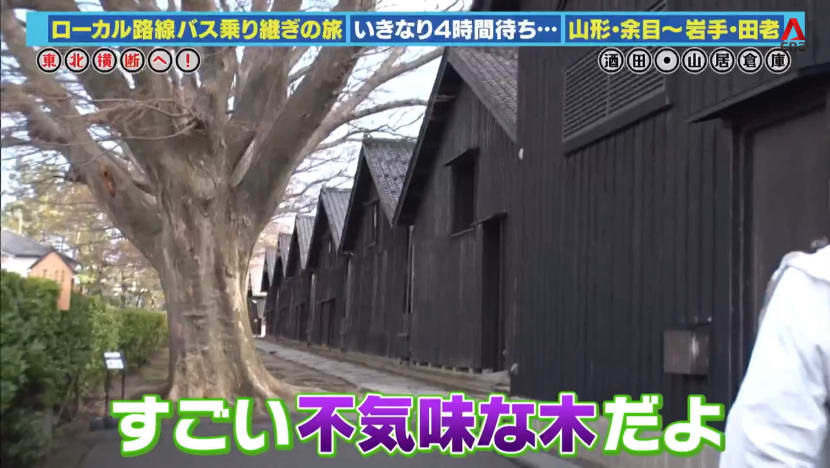Local Bus Adventure Across Tohoku - Part 1

Our next two-day bus journey takes us across the Tohoku region. We will start from Amarume Station in the town of Shonai, Yamagata Prefecture. Our goal is to reach Taro in Miyako City, Iwate Prefecture using fixed-route buses by 6pm on the second day. The checkpoint is Kakunodate in Akita Prefecture.
We first take a bus departing Amarume Station at 7am and head to Sakata Station. The bus passes the Mogami River and enters Sakata City. Our strategy is to head north from Sakata towards Yurihonjo and then go to the checkpoint of Kakunodate via the city of Daisen. We unfortunately miss the Sakata Station bus stop and end up alighting at the Shoko Bus Terminal at 7.45am. Upon making enquiries, we find out there are no fixed-route buses going to Yurihonjo. However, we can take a highway bus bound for Honjo. It departs from Sendai and then from Sakata, it runs on general roads like a normal fixed-route bus.
However, the bus which goes to the Honjo office in Yurihonjo will only leave the Shoko terminal at 11.50am, four hours later. We decide to make use of the time to do some sightseeing. A staff at the information centre suggests we check out the cherry blossoms at Hiyoriyama Park, a fish market in Sakata City and Sankyo Soko, a symbol of Sakata’s rice industry.
We first go to the Sankyo Soko storehouses. The city is one of the biggest rice producers in Japan. The rice storehouses were built during the Meiji era. From the storehouses set up along a tributary of Mogami River, rice used to be sent all over the country by ship. There is also a museum here where visitors can learn about the distribution of rice. Visitors can find out more about the history of Sakata at this tourist attraction.
We then go to Hiyoriyama Park, where there are about 400 Somei Yoshino cherry trees. The park is believed to be the best place in Sakata to view cherry blossoms. Every year in April, a cherry blossom festival is also held here.
The last sightseeing spot we go to in Sakata City is the Kaisen Ichiba market near the park. It sells a wide range of fresh fish caught locally. We drop by a shop called Ramen Tsuki and order the “Typhoon” pork rice bowl. Yamagata Prefecture is one of the top consumers of ramen. Traditional ramen from Sakata has a classic transparent soy sauce soup with a concentrated flavour of dried sardines and kelp. The rice bowl is served with a lot of pork cooked with ginger and soy sauce. An egg is placed on the pork like the eye of a typhoon, which explains the dish’s name.
We return to the Shoko terminal in Sakata City and take the bus to Yurihonjo. We pass the prefecture border and enter Akita. The bus reaches the Honjo office after 1.5 hours. We drop by the information centre to find out how to go to Kakunodate. We are advised to take the bus to the Yokote Bus Terminal and then transfer buses. As we have an hour till the bus departs from Yurihonjo, we explore the city. It used to be a major transport hub for the Tohoku region. We go to Saisho Shonen, which has been selling obanyaki in Honjo for 60 years. It is currently run by the fourth-generation owner. The obanyaki here has sweet bean paste inside and a crispy edge.
At 2.30pm, we take the bus from Yurihonjo to the town of Yokote, located at the foot of the Ou Mountains. We arrive at the Yokote Bus terminal at 4.40pm. We then board the 4.50pm bus bound for Omagiri. We enjoy the bus ride through the countryside and alight at Rokugo Koko Iriguchi. We transfer buses here and take a Kakunodate-bound bus at 5.30pm.
Tips:
1) Hiyoriyama Park is said to be the best place in Sakata City to see cherry blossoms
2) Visit the museum at Sankyo Soko to learn about Sakata’s history as a major rice producer












